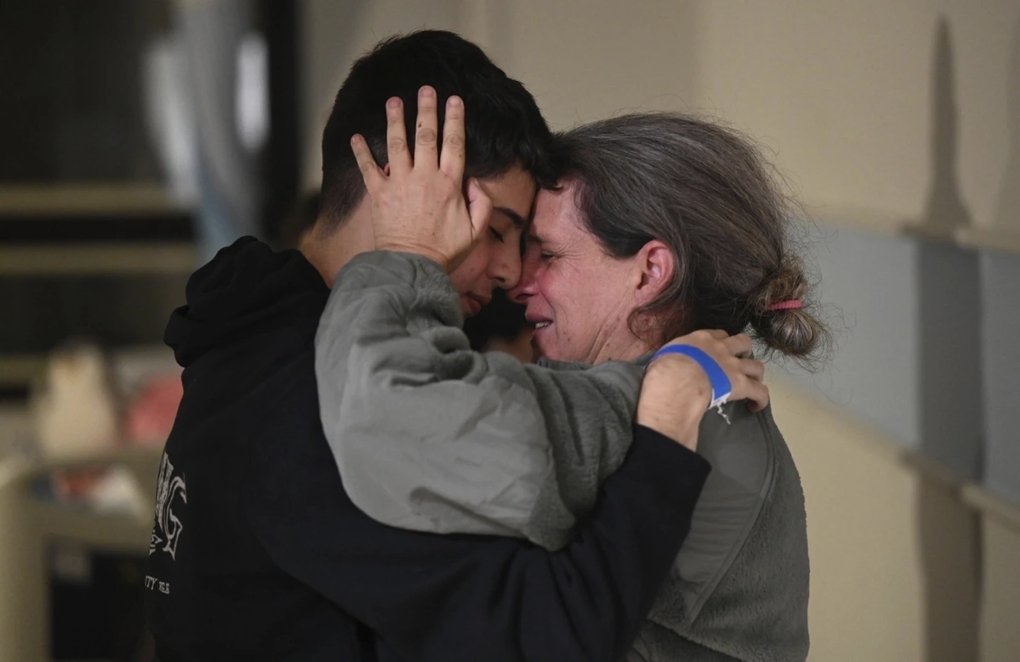
(Dan Tri) – Beds are plastic chairs, meals include bread and rice, and waiting for hours to use the bathroom are all part of the experiences of hostages during nearly 2 months of being held by Hamas.
Hostages reunited with their families after being released by Hamas (Photo: Getty).
Nearly two months after the October 7 raid by Hamas forces on the Israeli border, most of the released hostages have gradually returned to a stable state.
Nearly 70 people out of more than 200 hostages were recently released under the ceasefire agreement between Israel and Hamas in the past 4 days.
Merav Raviv has 3 relatives who were released by Hamas on November 24.
Raviv said her relatives recalled sleeping on rows of plastic chairs arranged close together in a room that resembled a reception desk.
Adva Adar, grandson of hostage Yaffa Adar, 85, shared similar information about his grandmother.
Adar’s family were all killed in the October 7 raid and her grandmother was taken hostage.
`For an 85-year-old woman, they only look forward to the house, the place to have memories, the place to raise children. My grandmother lost everything, and she had to start all over again at this age. This
In contrast to some other hostages, Yocheved Lifshitz, 85, said the victims of the kidnapping were treated kindly and had full medical care, including medicine.
After her release, Ms. Lipschitz described the tunnel stretching under Gaza, where she was held, as like a spider’s web.
Besides physical health, doctors also warn about the severe psychological damage that victims may experience after being imprisoned.
According to the Gaza Health Authority, in the 50 days since the hostages were captured, Israel has bombarded the Gaza Strip with both ground and air raids, killing at least 16,000 Palestinians.
Under the four-day ceasefire, Hamas forces released a total of 69 hostages including citizens of many different countries, while Israel released 150 Palestinian prisoners.






